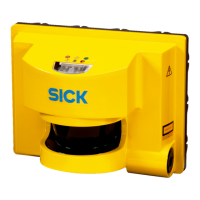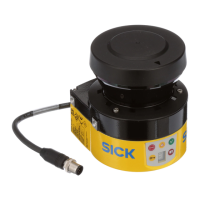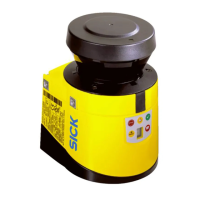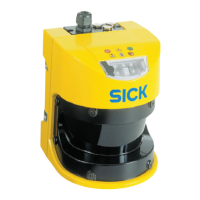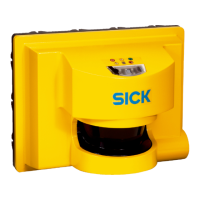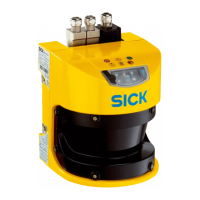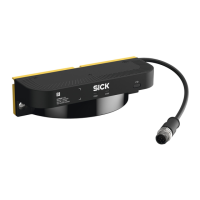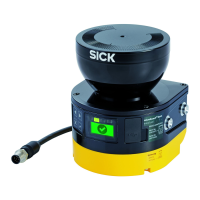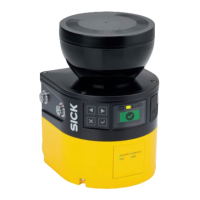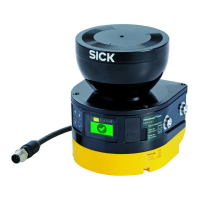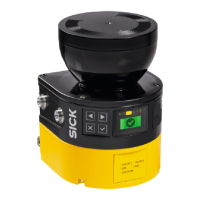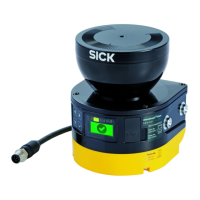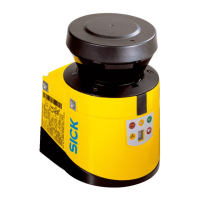
Do you have a question about the SICK S300 and is the answer not in the manual?
| Protection Class | IP65 |
|---|---|
| Resolution | 30 mm |
| Interface | RS-422, Ethernet |
| Power Supply | 24 V DC |
| Operating Temperature | 0 °C ... +50 °C |
Defines the qualifications and responsibilities of personnel for installing and servicing the S300 safety laser scanner.
Describes the intended uses and limitations of the S300 safety laser scanner in industrial environments.
Specifies the correct operational procedures and conditions for the S300 safety laser scanner.
Provides essential safety guidelines and precautions for operating the S300 safety laser scanner.
Highlights key features and capabilities of the S300 safety laser scanner variants.
Explains the operational principles and conditions required for the S300 safety laser scanner to function correctly.
Introduces the different S300 safety laser scanner variants and their key functional differences.
Describes the meaning of LEDs and the 7-segment display on the S300 safety laser scanner.
Details the operational status indications provided by the LEDs and 7-segment display on the S300.
Explains how to activate and the reasons for using compatibility mode for S300 safety laser scanners.
Explains the connection and configuration of incremental encoders for velocity-dependent monitoring cases.
Explains the function and configuration of Output Signal Switching Devices (OSSDs) for the S300.
Covers the configuration of restart behavior, including interlock and delay options for the S300.
Details the number of monitoring cases supported by S300 variants and control methods.
Explains how to configure monitoring case switching based on velocity information from incremental encoders.
Details mounting considerations for stationary horizontal applications of the S300.
Explains how to determine and configure the protective field size for safe operation.
Guides on mounting the S300 for stationary vertical access protection applications.
Details mounting for stationary vertical hazardous point protection with the S300.
Explains minimum distance calculation for hazardous point protection based on S300 resolution and machine data.
Covers considerations for mounting the S300 in mobile applications, like AGVs.
Details the calculation of protective field length for mobile applications based on stopping distance.
Details how to set timing for monitoring case switching to ensure safety during transitions.
Provides a step-by-step guide for mounting the S300 safety laser scanner.
Details how to connect the S300 safety laser scanner via its system plug and EMC regulations.
Provides a detailed pin assignment table for the S300 system plug across different variants.
Provides various connection diagrams for different S300 safety functions and configurations.
Details the prerequisites and tools needed for configuring the S300 safety laser scanner.
Outlines the initial commissioning process, emphasizing checks by qualified safety personnel.
Provides essential test notes for pre-commissioning and regular inspections of the protective device.
Details the pre-commissioning tests required to verify the protective device's function.
Covers regular inspections by qualified personnel to detect changes or manipulations after commissioning.
Specifies daily testing procedures to ensure the ongoing effectiveness of the protective device.
Describes the process for re-commissioning the S300 after temporary replacement.
Explains how to replace the S300 safety laser scanner, ensuring configuration transfer.
Provides initial guidance on handling faults and errors with the S300 safety laser scanner.
Describes the meaning of LED indications and how to rectify associated errors on the S300.
Explains the 7-segment display indications and provides error rectification steps for the S300.
Details the total response time calculation for the S300 application, including supplements.
Provides comprehensive technical data for the S300 safety laser scanner.
A checklist for manufacturers/installers to verify correct installation of safety laser scanners.
